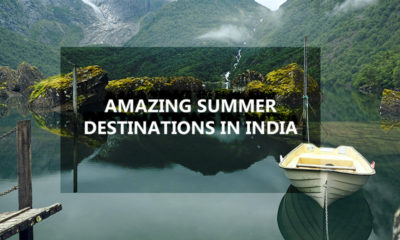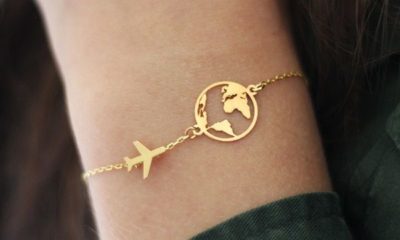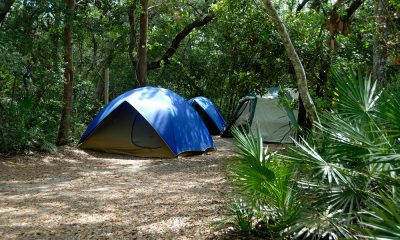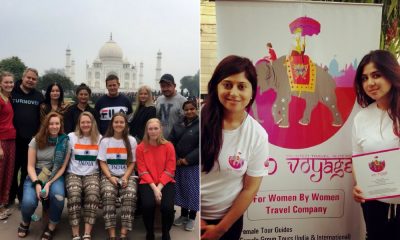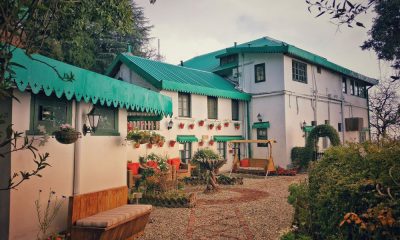Living
Ushering Springtime in Ladakh

The Dosmoche Festival marks the end of winters, making way for the colours of Spring
Words by Divya Prasad
On a warm February morning, the cold winds coming from the far away mountains seemed to be asleep. Cymbals clank, trumpets sing, and drums play melodies of yore. Masked faces stand out amongst the blue skies and vast mountains. Prayers hummed in circles and a mist of incense smoke invade my senses on the narrow streets of Leh. Streets were filled with joy as the monks dance around and a sacred effigy makes its way through the lively by-lanes.
It is the time when the snowy peaks warm up, bursting in the colours of Spring. Little bazaars spring up in the lanes, selling happiness in packages to all. People from villages far away set out on a journey to honour and celebrate the Spring gods and goddesses. And Dosmoche marches forth, dancing in full glory.
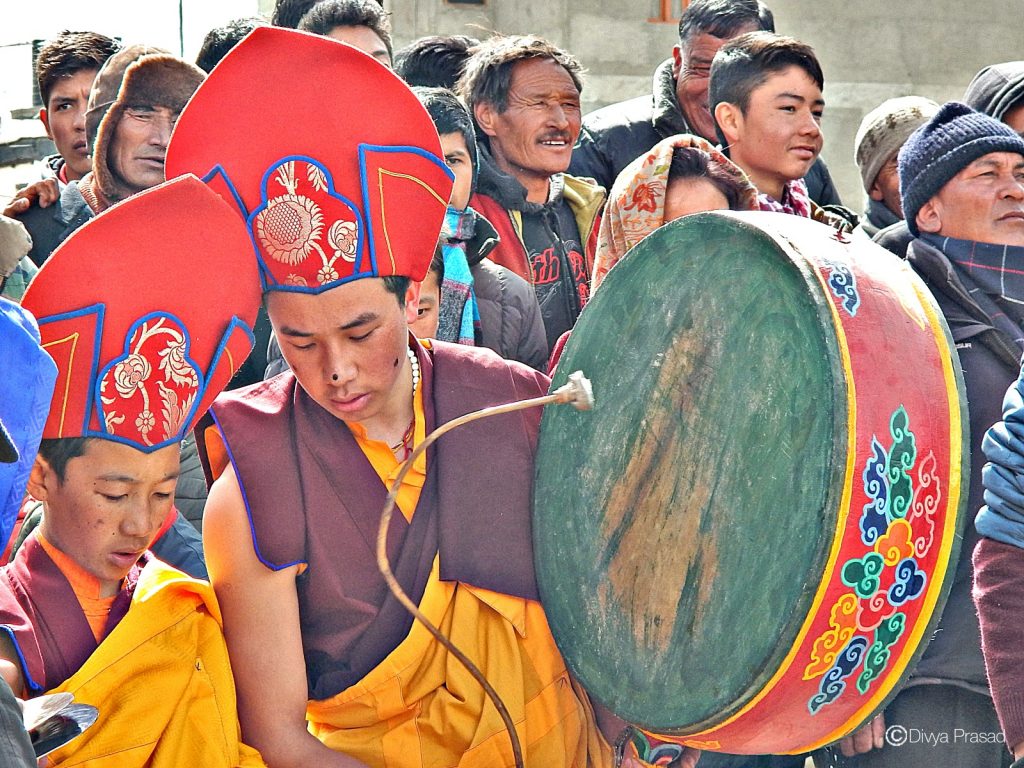
Welcoming Spring
The Dosmoche festival marks the end of winter and is a ritualistic celebration to welcome the spring. Symbolically, these Bön Buddhist animalistic tantric rituals are performed to ward off evil spirits and bring purity of thoughts as the Spring season sets in. It is a time to gather; and consciously cleanse and purify life. Metaphorically, it signifies releasing the evils of winter by appeasing the deities.
The Lamas wear masks, each representing an animal and deity spirit. They perform the Cham dance, swaying to the rhythm of drums, trumpets, and cymbals. Their inner power rises to the sacred beats and the holy smoke of Juniper leaves. In circles, they dance away into a state of trance. The ‘Cham’ represents the triumph of good over evil.
The legend of Cham dance
The sacred Cham dance was conceived by Guru Padmasambhava when Samye Monsatery was built in Northern Tibet. In ancient times, the Cham dance was a secretive tantric dance, the knowledge of which was passed on to a few chosen Lamas. Some Cham dances are also passed on by master lamas through mystical dreams and visions. A Cham is performed after five days of deep meditation, rituals, and chanting. The Cham also incorporates the nine ‘rasas’ of dancing. The Janak attires worn while performing the Cham represent deities, demons, and animals. The Cham dance is beyond the physical realm; it is metaphysical since it requires the monks to be in a transcendental state by forgetting the self. To understand the deities and be them as a means to enlightenment in the rituals is the essence of Cham. Being the deity and exorcising the evil forces; and show them the path to light is the sole purpose of Cham. While performing the ‘Cham’, the dancers identify with a particular deity, invoke them and conceiving the very universe as a Mandala with the deity. It involves rigorous chanting, gestures of hand and feet, yet being in a blissful state of meditation.
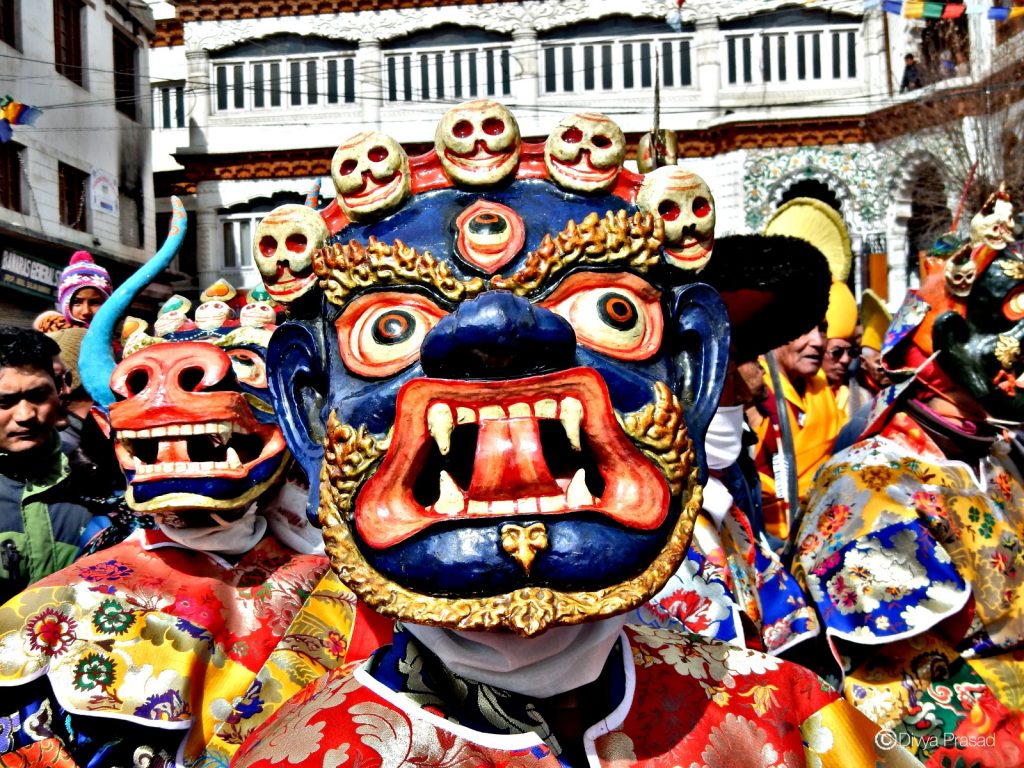
Legend has it that Guru Padmasambhava performed the first Cham in 770 AD to ward off evil spirits lurking around while building the Samye monastery. King Trishong Detsen called upon Guru Padmasambhava and invited him to Tibet to resolve this issue. The King and the artisans observed that every night, the evil spirits destroyed all that was created in the monastery that was under construction. This was disturbing the sanctum of the monastery. Guru Padmasambhava invoked his Tantric powers and performed rituals inside the monastery to spiritually cleanse the sacred space. In one of the rituals, Guru Padmasambhava buried five threads under the ground where the monastery stood, donning masks and a Janak attire; invoking the Chamara deity. He thumped and swayed in a trance, performing powerful Tantric mudras and postures to banish the evil spirits. Guru Padmasambhava drew Thiks – a sacred line in all directions to ward off the evil spirits. The Thiks kept the evil spirits from entering the monastery’s sacred space. It is also believed that Padmasambhava created the Vajrakila Mandala on Mount Hepori – one of the four sacred mountains of Tibet which is located in the east of Samye monastery. By creating this powerful tantric Mandala, Guru Padmasabhava pacified all disharmonious elements and evil spirits. This further appeased the local spirits and helped spread Buddhism. Thus, the Samye monastery was built like a Mandala – a sacred geometric pattern. The monastery complex is a Mandala representing the Buddhist universe while the main temple is built as a Mandala representing Mount Meru at the centre of this universe.
The Vajrakila dance performed by Guru Padmasambhava is also known for pacifying the angry ghost of Mashang Drompakye who harmed humans. Through this Vajra dance, Guru Padmasambhava transformed the soul into light and returned it to Sukhavati – the land of bliss. Since then, the Cham was passed on to King Trisong Detsen, his wife, and the generations ahead. The knowledge of ‘Cham’ is unwritten and can only be passed on spiritually. Today, the ‘Cham’ lives in the hearts and souls of a few older monks.
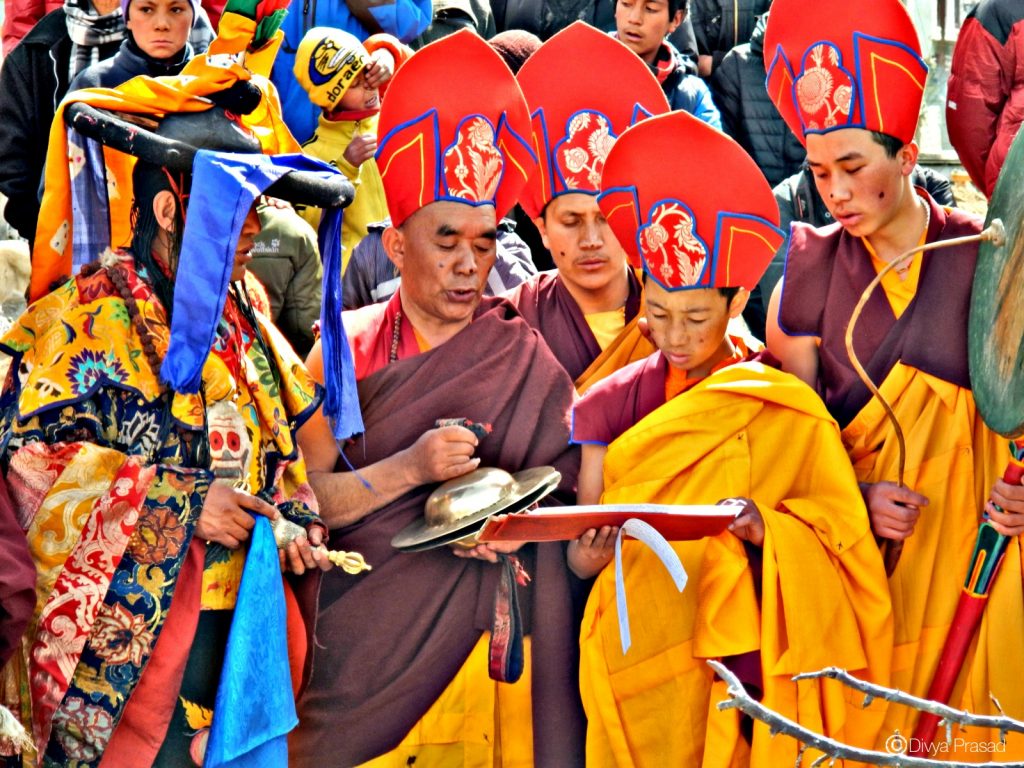
I immersed myself in the trance of the mystical dance, soaking in the stories narrated by a Lama who proposed to be my storyteller for the hour. The dancers chopped the air with their swords; stomping the dusty earth and invoking deities in their transcendental states through movements and gestures. The storyteller lama explained that the sword symbolises wisdom and the evil is the ignorance within us and that the path to enlightenment is the purpose of Cham.
The ceremonies were performed, as the masked lamas danced around the pyre. The Champson lead the sacred effigy created of wool, threads, butter, and barley to a gathering ground for a ritual to welcome the magic of Spring. This effigy; made of barley flour and butter represents the evil forces, which is cut with a sword by the Champson who invokes the evil into his own body. The effigy constructed over months by the Lamas with rituals and meditation is burnt to ashes, as the evil confronts death.
To me, the festival of Dosmoche was a lesson on life. A hope that spring is inevitable after a winter. That joy exists in each withering moments of life, if we can find the light in them. I feel grateful to have been a part of this sacred festival in the winters of Ladakh. While the wind carried its blessings through the ‘Lungtas’ fluttering high up in the snowy mountains, and prayers voiced through hearts; these mystical tales of light sprung forth in my heart.
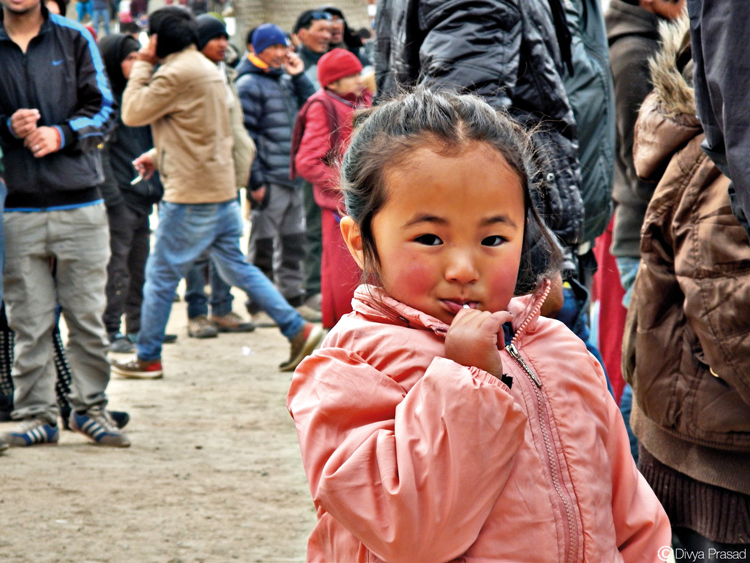
Author bio:
A travel blogger at Obsessive Compulsive Traveller, Divya Prasad is also an energy healer and Sacred Geometric Artist at Iktomi
Travel
Essential Summer Travel Bag Must-Haves

As the summer sun beckons, it’s time to dust off your travel bags and embark on exciting adventures. Whether you’re jetting off to exotic destinations or exploring hidden gems closer to home, packing the right essentials can make all the difference in ensuring a hassle-free and enjoyable journey. Join me as we explore the must-have items to pack in your travel bags for a memorable summer getaway.
Sun Protection Essentials:

Beat the heat and safeguard your skin from harmful UV rays with sun protection essentials. Don’t forget to pack sunscreen with a high SPF, sunglasses to shield your eyes, and a wide-brimmed hat for added protection. Additionally, lip balm with SPF and aloe vera gel can provide relief from sunburns and keep your lips hydrated.
Lightweight Clothing Options:

Embrace the spirit of summer with lightweight and breathable clothing options that keep you cool and comfortable on your travels. Pack versatile pieces such as cotton shirts, shorts, flowy dresses, and swimsuits for beach outings. Opt for wrinkle-resistant fabrics to minimize the need for ironing and save space in your luggage.
Hydration Essentials:

Stay hydrated on the go by packing a reusable water bottle in your travel bag. Fill it up whenever you have access to clean drinking water to quench your thirst and reduce plastic waste. Consider packing electrolyte packets or tablets to replenish lost minerals during outdoor activities or hot weather.
Travel-Friendly Toiletries:

Travel toiletries in clear plastic, quart-sized bag on white background
Streamline your toiletry bag with travel-sized essentials that meet TSA regulations and save space in your luggage. Pack items such as shampoo, conditioner, body wash, toothpaste, and moisturizer in leak-proof containers. Don’t forget to include a compact travel towel and wet wipes for quick refreshment on the go.
Tech Gadgets and Accessories:
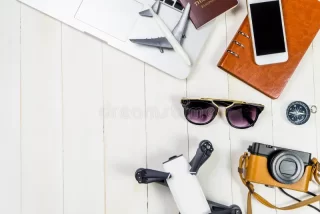
Capture unforgettable moments and stay connected with essential tech gadgets and accessories. Pack your smartphone, camera, or GoPro along with chargers, power banks, and adapters for international travel. Consider investing in a lightweight and portable Bluetooth speaker for impromptu beach parties or outdoor picnics.
First Aid Kit and Medications:

Home first aid kit on a blue background. The elements of the first aid kit are laid out on the table.
Be prepared for minor emergencies and health-related issues by packing a well-stocked first aid kit in your travel bag. Include items such as adhesive bandages, antiseptic wipes, pain relievers, antihistamines, and motion sickness tablets. Don’t forget to pack any prescription medications you may need during your trip.
With these essential items packed in your travel bag, you’re ready to embark on a summer adventure filled with unforgettable experiences and cherished memories. From sun protection essentials to tech gadgets and first aid supplies, being prepared for every situation ensures a smooth and enjoyable journey wherever your travels may take you. So, grab your bags, soak up the sun, and let the summer adventures begin!
Travel
Exploring Nature’s Splendor: The Best Waterfalls to Visit in Kerala
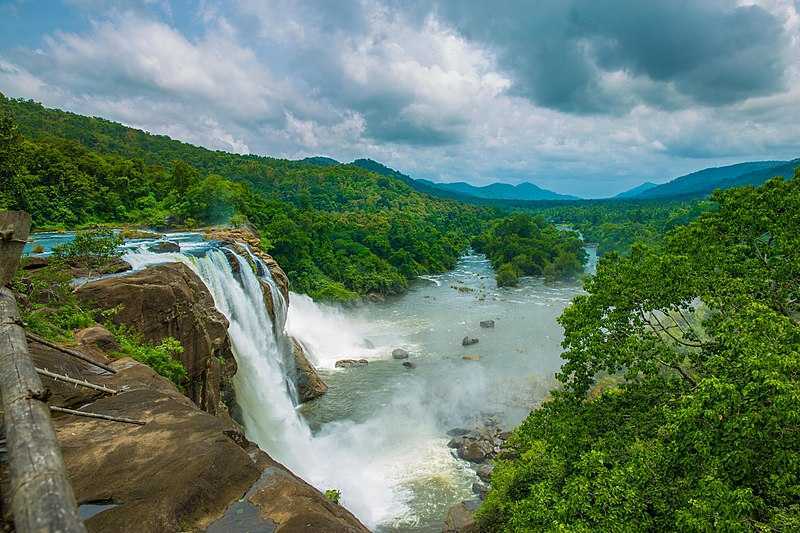
Nestled amidst lush greenery and pristine landscapes, Kerala, often referred to as “God’s Own Country,” is home to some of the most breathtaking waterfalls in India. From cascading torrents of water to serene natural pools, these majestic falls offer a refreshing escape into the heart of nature’s splendor. Join me as we journey through the best waterfalls to visit in Kerala, each offering its own unique charm and allure.
Athirappilly Waterfalls:
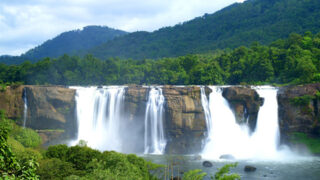
Located in the Thrissur district, Athirappilly Waterfalls is often dubbed as the “Niagara of India” for its impressive cascade and grandeur. Surrounded by dense tropical forests, the waterfall plunges from a height of approximately 80 feet, creating a mesmerizing spectacle of mist and spray. Visitors can enjoy scenic viewpoints, nature trails, and boat rides to witness the beauty of Athirappilly up close.
Meenmutty Waterfalls:
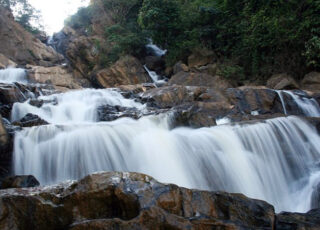
Tucked away in the Wayanad district, Meenmutty Waterfalls is a hidden gem nestled amidst the Western Ghats. With a three-tiered cascade plunging from a height of over 800 feet, Meenmutty is one of the tallest waterfalls in Kerala. Accessible via a trek through dense forests and rocky terrain, the journey to Meenmutty is as thrilling as the destination itself, offering panoramic views of the surrounding landscape.
Vazhachal Waterfalls:
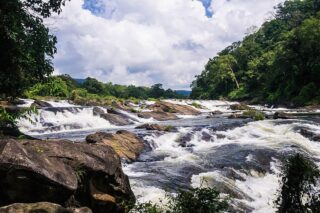
Just a stone’s throw away from Athirappilly, Vazhachal Waterfalls offers another enchanting spectacle of cascading waters amidst lush greenery. Fed by the Chalakudy River, Vazhachal descends gracefully over rocky terrain, creating a picturesque setting for nature enthusiasts and photographers alike. Visitors can explore nearby attractions such as the Vazhachal Forest Gardens and take a dip in the cool, refreshing waters.
Palaruvi Waterfalls:
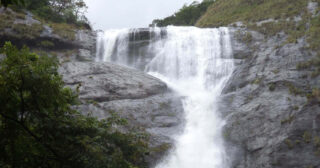
The name Palaruvi means “stream of milk” in Malayalam, and when you visit the falls, you’ll understand why. To get there, you’ll need to hike through the forest. There’s a tiny spot where you can swim and take in the cascade. You can combine a visit to the Shenduruny Wildlife Sanctuary with a tour to this idyllic setting. It is regarded as one of Kerala’s top waterfalls and is sure to add magic to your vacation.
Chethalayam Waterfalls:
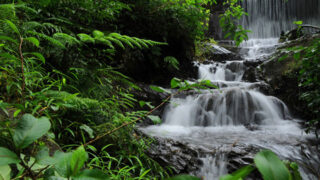
One of Kerala’s most well-known waterfalls, particularly for hikers and adventure seekers, is Chethalayam. To reach this picturesque waterfall from Kidangand, you would need to hike for around 4 km. Trekkers still favour it even though it dries out in the summer.
Soochipara Waterfalls:
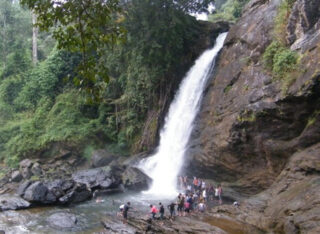
Situated near the town of Kalpetta in Wayanad, Soochipara Waterfalls, also known as Sentinel Rock Waterfalls, is renowned for its natural beauty and serene surroundings. Cascading down from a height of around 200 feet, the waterfall is nestled amidst dense forests and rocky cliffs, making it an ideal spot for trekking, rappelling, and swimming in the natural rock pools below.
Thusharagiri Waterfalls:
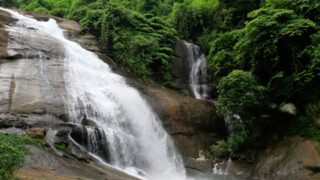
Tucked away in the Kozhikode district, Thusharagiri Waterfalls is a hidden gem waiting to be discovered by adventurous travelers. Comprising a series of cascades formed by the Chalippuzha River, Thusharagiri offers a serene retreat amidst verdant landscapes and lush greenery. Visitors can trek through the forested trails, indulge in bamboo rafting, and savor the tranquility of this off-the-beaten-path destination.
With their majestic beauty and serene surroundings, the waterfalls of Kerala offer a captivating escape into nature’s embrace. Whether you’re seeking adventure, tranquility, or simply a scenic retreat, these cascading wonders promise an unforgettable experience that will leave you enchanted and rejuvenated. So, pack your bags, lace up your boots, and embark on a journey to explore the best waterfalls Kerala has to offer.
Luxury
Expensive jewels owned by Nita Ambani
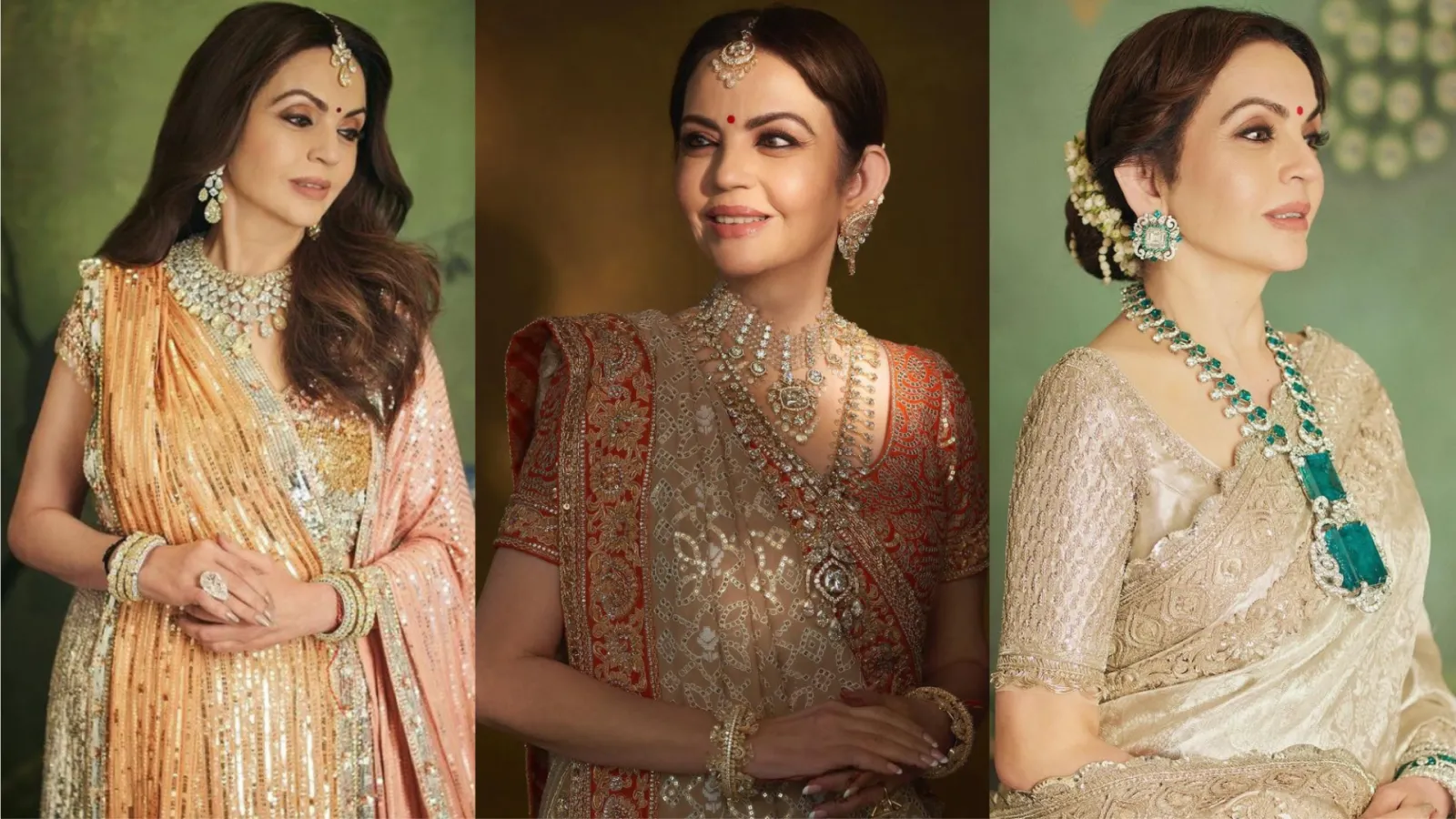
The Ambanis are renowned for leading “King”-sized lives, and any glimpse into their world instantly becomes viral on social media. They rank among the wealthiest families in the world, and their notable contributions across a wide range of industries are matched by their admirable sanskars and grounded demeanour. At every public event, the family never passes up the opportunity to showcase their elegance and charm. The Ambani family’s women are also the best at styling some of the most gorgeous ensembles and accessorising them with distinctive pieces. One of the nation’s pioneering ladies, Nita Ambani, is married to the biggest business magnate and possesses an enormous collection of ostentatious jewellery. Let’s examine the list of some of Nita Ambani’s most stunning jewelled pieces.
Diamond choker necklace with pearl drops

At the lavish wedding celebration for Sonam Kapoor and Anand Ahuja in 2018, Nita Ambani wore a necklace made of flawless diamonds. Nita wore an embroidered lehenga in a beige shade from the collection of Abu Jani and Sandeep Khosla, the designer partnership. She completed her ensemble with a choker made of pearl and diamonds, layered pearl necklace, and bold earrings.
Princess-cut diamond neckpiece

Nita Ambani was immaculate and lovely during her daughter Isha Ambani’s reception with Anand Piramal. She donned a baby pink chiffon saree that was profusely embroidered with buti work and cream-colored stones. She exuded elegance by pairing her outfit with a shirt embellished with intricate embroidery. All eyes were drawn to her princess-cut diamond neckpiece with cuboid-shaped diamonds and matching earrings, though. It was just too good to miss.
Jadau polki diamond jewelry set
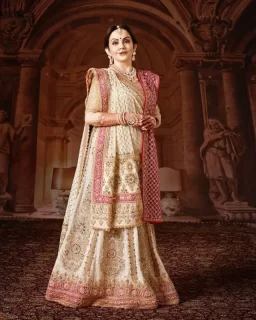
On December 12, 2018, at Antilia, Isha Ambani’s mother Nita dressed simply like a queen. She chose a white lehenga by famous designers Abu Jani and Sandeep Khosla, which she accessorised with a dupatta, matching choli, and a red chadar with crystal embellishments tucked under her left shoulder. But her dazzling jewellery was what really made her look elegant. She wore a sleek nath, a maang teeka, bangles, a necklace, matching earrings, and a haath phool with jadau polki diamonds.
Polki Diamond Jewellery Set
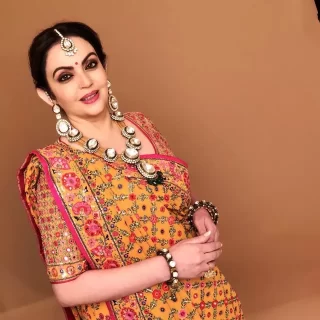
During her daughter Isha Ambani’s wedding, Nita Ambani looked stunning in an ethnic outfit the colour of sunshine. Nita paired it with one of her statement pieces of jewellery, which included a sleek maang teeka, bangles, matching diamond drop earrings, and a polki diamond neckpiece exquisitely crafted with golden strings, to complete her look book.
Kundan set with gold-wired diamonds
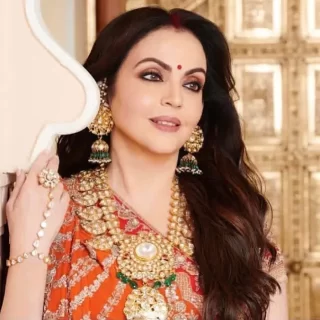
A glance at Nita Ambani’s gorgeous ensembles with bold jewellery conveys a sense of royalty. During one of her public outings, she was observed displaying her elaborately designed jewellery to complement her traditional style. She chose a vivid orange lehenga choli and accessorized it with a haathphool, matching jhoomar earrings, and a gold-wired diamond kundan necklace that was fastened with two enormous pendants.
Two-tiered necklace made of diamonds and emerald stones

Nita Ambani wore a multicoloured choli with a bandhani lehenga at her son Akash Ambani’s wedding. She also chose to wear stunning diamond jewellery, which included a sleek nath, a maang teeka, matching earrings, and a two-tiered necklace set with emerald stones. The whole outfit she was wearing made her appear stunning.
Giant emeralds embellishment an uncut diamond necklace
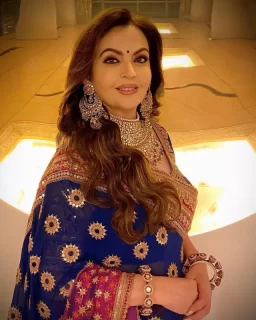
With her poise and grace, Nita Ambani may easily outshine any Bollywood diva in terms of style statements. The wealthiest business tycoon’s wife possesses some unusual diamond jewels. During one such occasion, she was observed wearing a distinctive necklace set with enormous emeralds and uncut diamonds. She looked stunning when she wore her neckpiece with matching earrings, a large ring, and flower-shaped diamond bangles.
Saat Nori diamond necklace
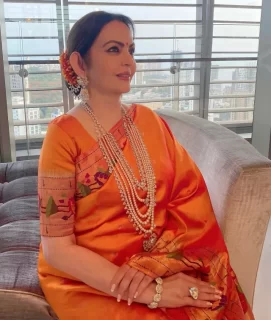
Nita wore an orange silk saree and beautifully matched it with diamond jewels for Radhika Merchant’s Arangetram programme. She was undoubtedly one of the most beautiful women of that era. Nita’s jewellery choices included a large locket and a diamond Saat Nori Haar with pearl tiers, matching flowery jhumkas connected by diamond long chains, a massive heart-shaped ring, and diamond bangles.
-
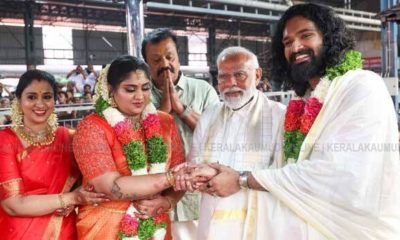
 Entertainment3 months ago
Entertainment3 months agoThe Stunning looks from Bhagya Suresh’s Wedding
-
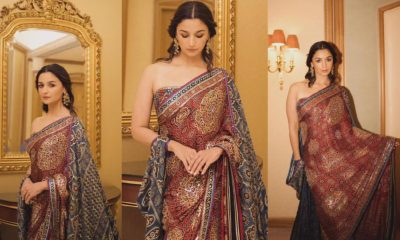
 Fashion3 months ago
Fashion3 months agoMost Discussed Ajrakh Saree of Alia Bhatt
-

 Entertainment3 months ago
Entertainment3 months agoThe Most Stylish Guests of Bhagya Suresh Reception
-

 Entertainment3 months ago
Entertainment3 months agoEverything about the Ira Khan wedding that is out of the norm
-

 Entertainment3 months ago
Entertainment3 months agoBridal Bliss : All Bridal Looks of Swasika Vijay
-
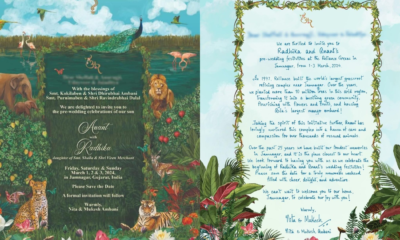
 Entertainment3 months ago
Entertainment3 months agoAll About The Dreamy Pre Wedding Invite Of Anant Ambani & Radhika Merchant
-

 Fashion3 months ago
Fashion3 months agoMajor Denim Trends You Need To Know in 2024
-

 Entertainment3 months ago
Entertainment3 months agoBest Looks from Golden Globes 2024


